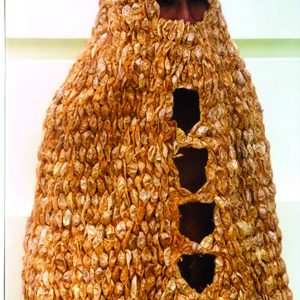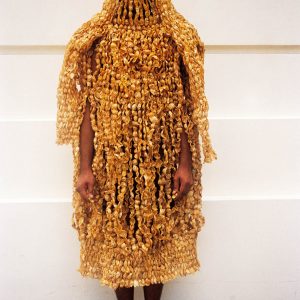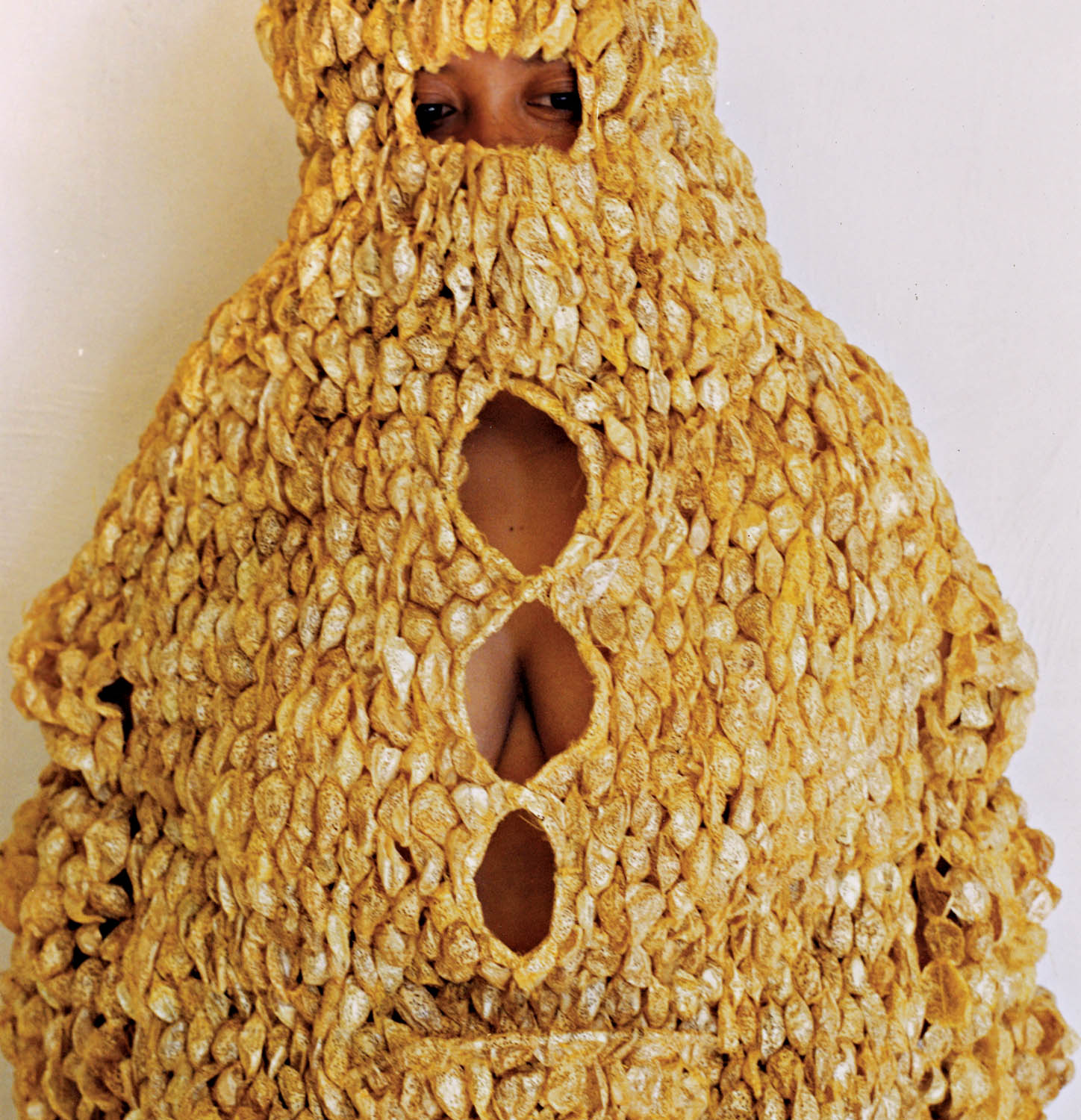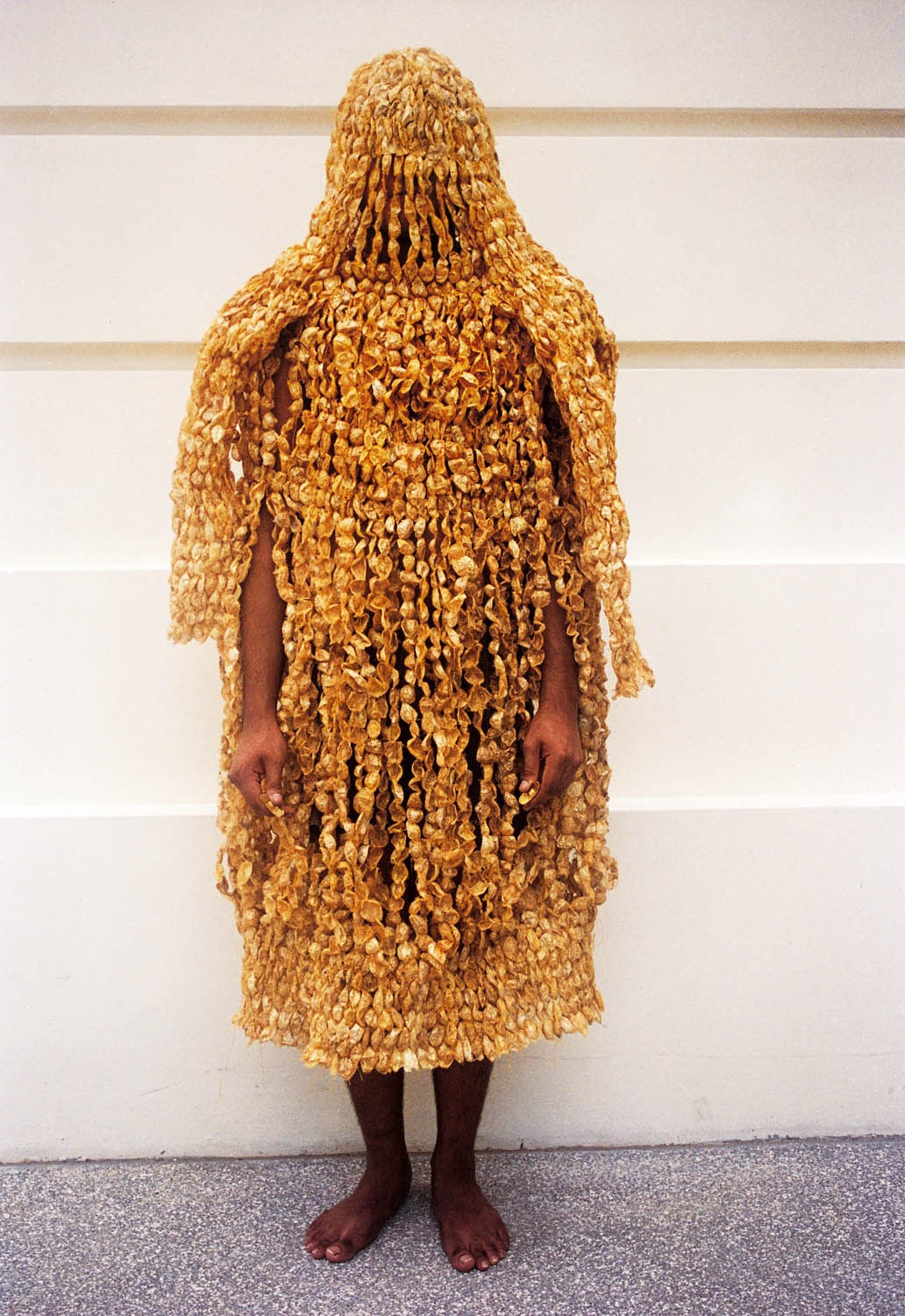The work ‘Shameless Gold’ consists of four costumes, telling about an image of the social elite. It is about the social maintenance and the desire for richness. Contemporary society is fascinated with power and wealth, like royalty and the extremely rich. How do they live, what kind of attributes do they have, etc. To justify wealth and to give it prestige and credibility, it is often placed in particular cultural context (historical/traditional/religious).
I connected this theme with my situation living in Indonesia, a country in which the gap between rich and poor is gigantic. ‘Shameless Gold’ brings associations with the financially rich, with their big fancy cars, ostentatious golden watches and adornments. As the rich are often politically influential, gold also implies corruption, greed and nepotism, the underbelly of the country’s tangled political system. For the poor, or those from the lower classes, gold is regarded as the only form of security. It is a common practice to exchange wages and earnings for gold, a liquid asset, instead of having cash savings in the bank, which can be “unreliable”, as the 1997 economic crash and the subsequent plummeting of the Indonesian Rupiah attest to.







